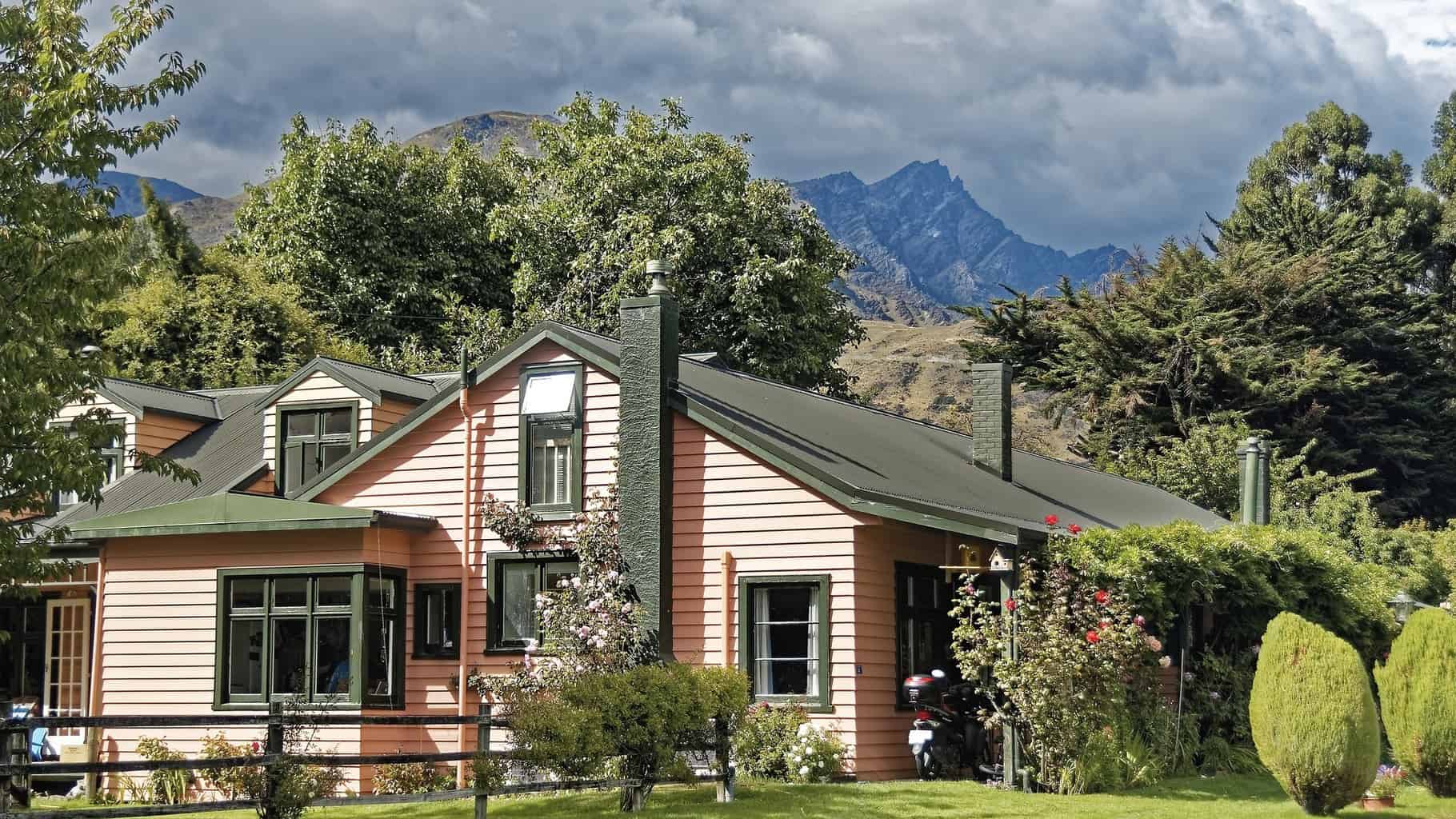If you’re looking to live a more sustainable lifestyle, there’s no better place to start than at home.
It’s the place where you put down roots, build a life, and spend most of your time. That translates to a lot of energy and material consumption, which makes it crucial to think about your impact on the environment.
If you are thinking more about this subject, you aren’t alone – over three-quarters of people are interested in learning more about sustainability.
If you’re looking to move to a new residence, consider the elements of an eco-friendly house and how they can give you the best of both worlds in terms of both home comfort and a smaller burden on the environment.
And if you’re looking to build or remodel your house, make sure to read our guide on eco-friendly building materials.
What is an Eco-Friendly House Made Of? Check These 12 Key Elements
From the systems that supply power and water to the aesthetic features inside, nearly every element of a house can be made eco-friendly.
Starting beneath the ground and up to the roof, here are some elements to make your home more sustainable.
1. Geothermal Pumps
Geothermal pumps use between 25 and 50 percent less energy than conventional options. This can significantly lower bills and result in significant savings throughout the years.
Eco-friendly construction methods can often focus on pumps like these for several reasons. In addition to using the Earth’s natural energy to power a house, they work without any outdoor components.
Compare that to a traditional AC unit, for example, which has a condenser that could lead to pollution.
The reason geothermal systems work so well is that, despite above-ground temperature fluctuations, the temperature below the ground remains relatively constant.
This makes it effective at supporting the heat exchange necessary for electric power and systems like HVACs.
While prices can vary depending on the size of the system, it’s usually more affordable (especially over time) than traditional power options.
2. Smart Irrigation Systems
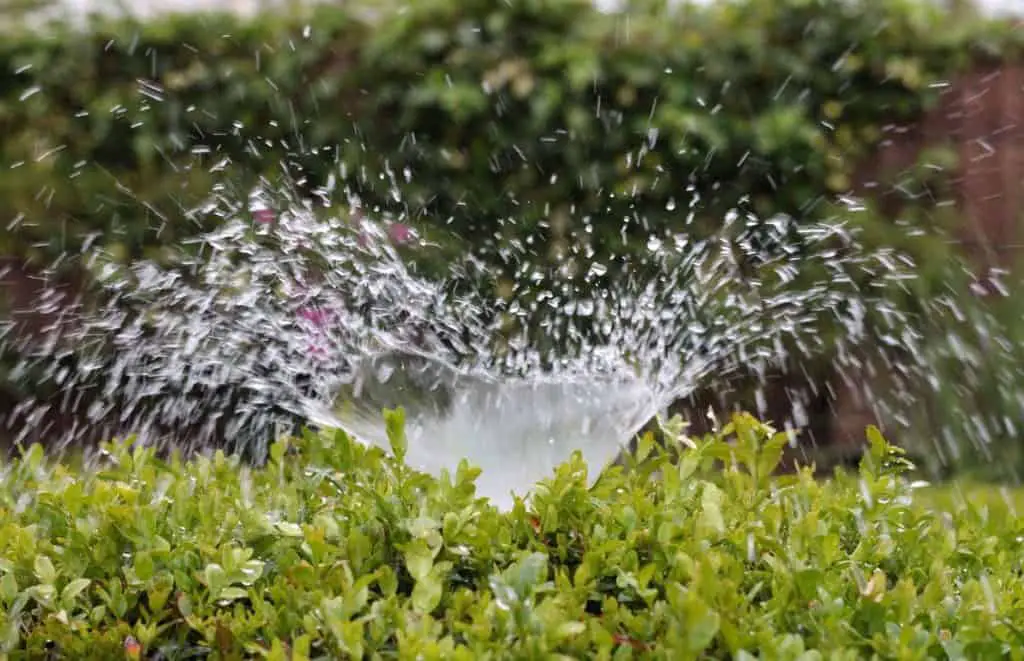
The features of a sustainable house don’t always have to be indoors.
Outdoor irrigation systems, such as sprinkler and watering devices, can be designed with smart technology that uses soil sensors and other features (like this one, for example).
These sensors can detect moisture in the ground, so you’ll never end up overwatering the lawn. Not only does this help you save on water use, but it ensures your lawn doesn’t get ruined.
Some smart irrigation controllers can cost around $250 depending on the features they include and how many devices they’re designed to work with.
3. Energy-Efficient Appliances
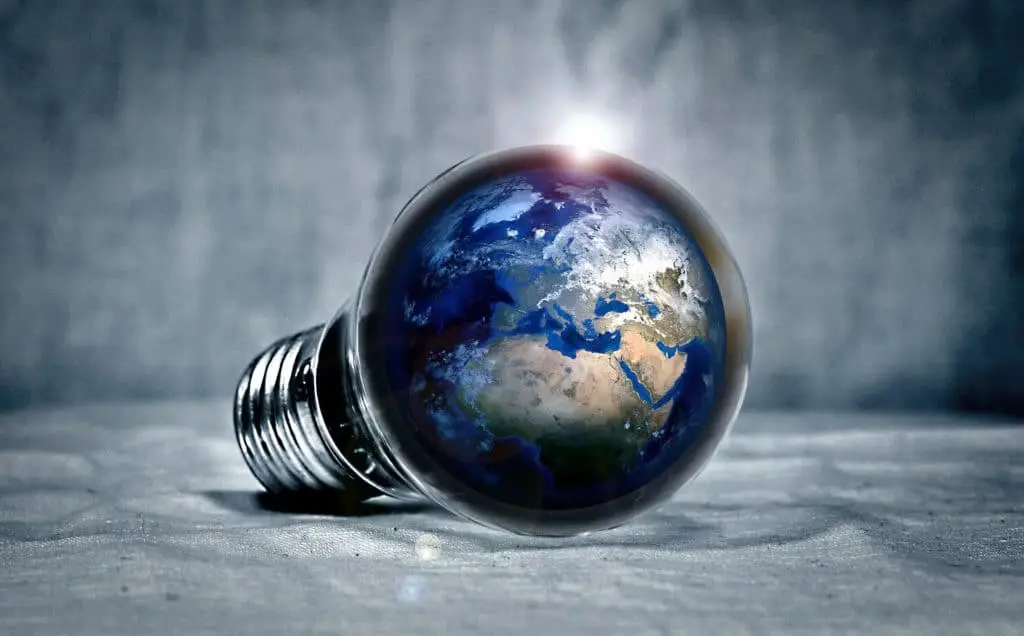
As with most appliances, costs can vary depending on the brand you buy. However, the upfront price doesn’t tell the whole story. An energy-efficient washing machine could save you about $200 a year.
If you do end up paying $200 more for energy-efficient appliances and end up keeping it longer than a year, you’ve helped the environment and saved yourself money.
Appliances that you should consider replacing include washer/dryers, stoves, and dishwashers.
Don’t forget about energy-efficient lightbulbs. They can consume about 75% less energy than standards.
Some estimates say these bulbs can use up to 90% less energy, and last 50 times longer than incandescent bulbs or five times longer than fluorescent bulbs.
While you may not think a bulb does much, think how much energy could be saved by installing a dozen or so of these in your house.
4. Zero VOC Materials
Before we dive into the must-have eco-friendly feature in building, let’s cover something you shouldn’t have – volatile organic compounds (VOC).
VOC materials are defined as any compound of carbon, excluding carbon monoxide, carbonic acid, carbon dioxide, ammonium carbonate, and metallic carbides or carbonates. These are all compounds that participate in atmospheric photochemical reactions.
These compounds are a danger to the environment, people, and pets because they emit dangerous compounds into the air. Common examples of VOCs include acetic acid, butane, ethanol, alcohol, formaldehyde, and methylene chloride.
As for where you’d find these chemicals, they’re most common in paints, wood preservatives, and certain adhesives designed to hold furniture together.
5. Green Floor Finish
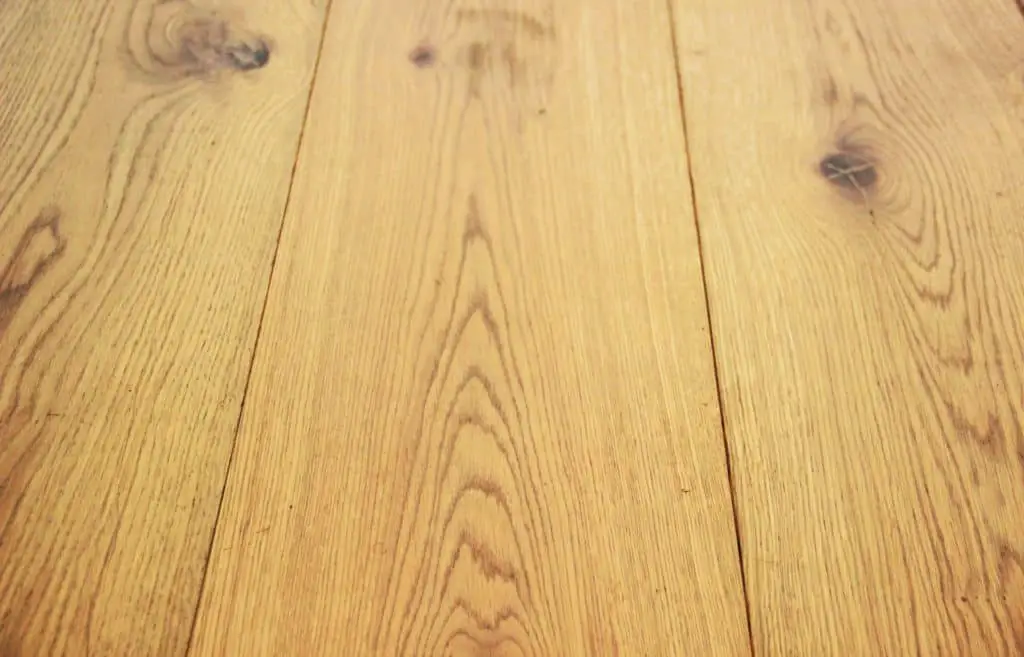
Floor finish is essential for aesthetics and protection. However, one of the most common materials used, polyurethane, isn’t the most eco-friendly.
Instead, consider going with beeswax.
Not only is it safe for human consumption, meaning the fumes won’t hurt you, but it can provide that beloved shine at a very affordable price. It’s safe enough that food bowls are made from it, so it’s safe to be ingested by humans – even through the air.
You can find other options, just make sure they don’t include some of the popular dangerous chemicals in traditional finishes like zinc, phosphate, phthalate, and ammonia.
6. Organic Wallpaper
It’s common knowledge that trees are cut down in considerable numbers to fulfill the public’s demand for paper. What isn’t common is just how many trees are sacrificed in this process.
Recycled paper or even options like grasscloth can be used to create stunning wall coverings that don’t hurt the environment.
There are a variety of eco-friendly house materials at your disposal if you want to get coverings beyond simple wallpaper. You could invest in recycled glass tiles for shower walls, wood for dens, and much more.
7. Recycled Roofing
Speaking of recycling, you can also use recycled material for your roof.
Metal roofs can be energy efficient if it is reused – however, creating new metal is a process that consumes a lot of energy.
Clay tiles are a very sustainable and eco-friendly option, as they’re an abundant natural resource that’s biodegradable.
Slate shingles are another popular option. They’re non-toxic to the environment and easy to reuse. They’re also very sustainable and could potentially outlast the rest of the house.
Wood shingles have all these traits as well, though they’re not as durable.
Some people add solar panels to their roof, which is a smart idea, though it is no substitute for a sustainable and eco-friendly material below them.
8. Smart Showerheads
The term “smart” is becoming synonymous with the term “green.” With the right technology, you can minimize waste and make sure you never use more than you need.
Since water conservation is a critical aspect of being eco-friendly, consider having a showerhead installed that can limit the amount you use.
For the average family, showering represents nearly a fifth of all water use and takes about 40 gallons per day (151 liters).
While the standard showerhead uses about 2.5 gallons per minute (GPM), a smart head can keep that below 2 GPM. Over months or years, this can result in a lot of water savings along with lower water bills.
There are even showerheads which display the water usage in real time (like this one).
The change isn’t enough to impact the quality of your shower, but it will make your home (or at least your bathroom) much more sustainable.
9. Solar Chargers
If you want to minimize that electric consumption, you have two options. Charge fewer devices or charge them smarter.
Solar chargers are becoming more common. They can charge up in a manner of hours. While the charge time may be short, the battery life can last much longer than you’d expect.
To make sure you aren’t consuming excess energy, only buy a charger with the number of ports you need.
10. Smart Thermostat
Any excess use of your HVAC system isn’t just pushing the temperature away from your ideal level – it’s wasting energy.
There’s also the issue of waiting for the home to heat up or cool down. Some people even leave their system on while they’re away from home, which can waste energy and money.
With HVAC usage functioning as about a 10th of all energy consumption today, and global air conditioner stocks expected to increase by 4 billion in 30 years, it’s clear this is an area to target with sustainability initiatives.
A smart thermostat is one of the main features of a sustainable house and, more specifically, a sustainable HVAC setup.
Not only can you set the unit to stop operating once a specific temperature is reached, but you can also set it to turn on at a specific time, so your home can be at the perfect temperature when you arrive.
11. Smart Fountains
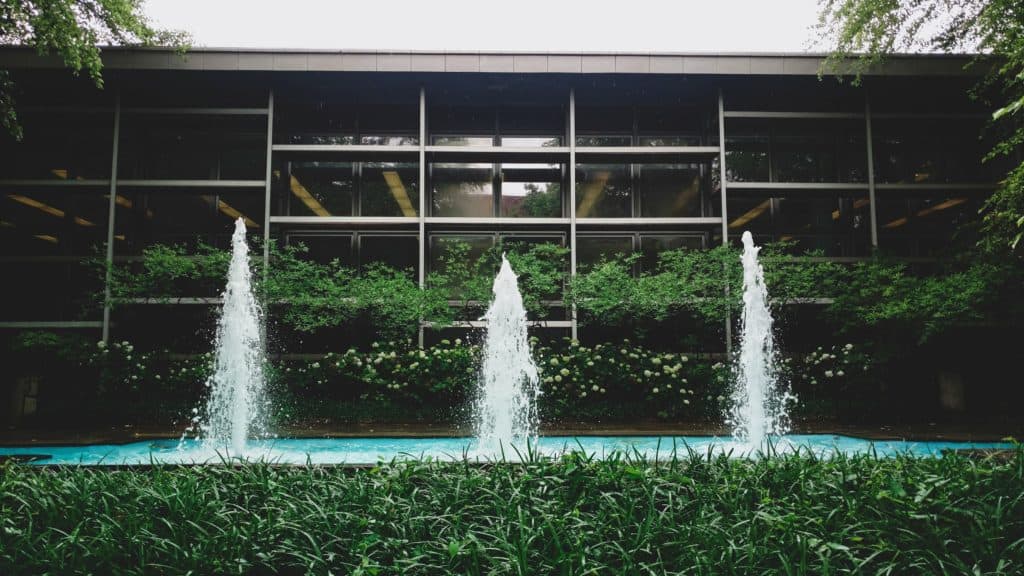
Even fountains can be installed with a sustainable approach.
Whether it’s a small birdbath or a larger fountain, they can be built using low-flow pumps and smart technology designed to turn the fountain on at optimal points during the day.
We can all reduce our water consumption by about 20 percent with better technology, and that includes the amenities outside.
Factors like the size and water use of the fountain will impact the price, but a more sustainable option is easier to pay for over time.
12. Solar Barbecue
From low-power pool pumps to solar-powered lighted umbrellas for decks, almost any outdoor amenity can be geared toward this sustainable approach. This shows that there’s plenty of options for luxury eco-friendly homes.
A solar barbecue is a perfect option for someone who enjoys grilling outside but wants to be more sustainable in their approach.
Traditional barbecues often rely on fuel sources like propane, which can release emissions into the air that harm people, animals, plants, and water sources.
Solar barbecues use panels to charge up and store energy with the sun’s natural light. By reflecting or absorbing UV rays and converting them into infrared, they have enough energy to power burners.
This allows them to cook food safely, melting down all fats and achieving the same level of efficiency as traditional gas barbecues.
How Much Does It Cost to Build an Eco-Friendly Home?
If you’re thinking about taking a sustainable approach to a ground-up building project for a new house, it’s essential to know which features will impact your budget the most.
Small investments like energy-efficient bulbs, recycled curtains, and green floor finish can cost a couple of hundred dollars altogether.
A smart thermostat or showerhead could cost close to $100 on its own, making them middle-tier eco-friendly home investments.
Energy-efficient appliances can cost between a few hundred dollars or even around $1,000.
You can also expect to pay in the thousands range for irrigation wells, smart fountains, and geothermal pumps, though they can provide a return on investment over the years.
Why Is It Important to Know the Elements of an Eco-Friendly House?
Knowing and seeking out the elements of an eco-friendly house is vital because it gives you the chance to live a more sustainable life right from the comfort of your own home.
Remember, the main benefits of thinking eco-friendly include:
- A sustainable home doesn’t harm people, pets, or the surrounding landscape
- It helps you pass on the values of sustainability and eco-friendly living to your kids
- Sustainable technology can often be more affordable or at least lower energy bills
- Eco-friendly products can reduce your chance of health problems (such as from VOC inhalation)
- Eco-friendly products take advantage of the environment to help you live more comfortable (such as with geothermal pumps)
A sustainable lifestyle doesn’t start when we go to work or school – it’s a 24/7 obligation we all have to our planet.
With eco-friendly products and smarter decisions, you can enjoy the comforts of home for a long time to come. Because while your house is your home, so is the Earth – so remember to take care of it.
Curious how else you can go green? Consider these additional tips for turning your home into an eco-friendly structure.
You Might Also Like…
- Is Fast Food Bad for the Environment? (& What You Can Do)
- Is Fabric Softener Bad for the Environment? (+5 Eco-Friendly Options)
- Is Fuel Dumping Bad for the Environment? (& How Often It Happens)
- Is Electricity Generation Bad for the Environment? (What You Should Know)
- Is Dry Cleaning Bad for the Environment? (4 Surprising Facts)
- Is Diamond Mining Bad for the Environment? (Important Facts)
- Is DEET Bad for the Environment? 4 Effects (You Should Know)
- Is Cat Litter Bad for the Environment? (5 Common Questions)
- Is Burning Cardboard Bad for the Environment? (6 Facts)
- Is Burning Paper Bad for the Environment? (6 Surprising Facts)
- Is Burning Leaves Bad for the Environment? (7 Quick Facts)
- 4 Natural Cleaners for Quartz Countertops
- 6 Eco-Friendly Acrylic Paint Brands (For Sustainable Artists)
- 5 Eco-friendly Alternatives to Acrylic Paint (& How to Make Them)
- Is Acrylic Paint Bad for the Environment? (7 Quick Facts)
- Is Acrylic Yarn Bad for the Environment? 8 Crucial Facts
- Is Acrylic Bad for the Environment? (8 Quick Facts)
- Is Aluminum Foil Bad for the Environment? 7 Quick Facts
- Is Bleach Bad for the Environment? 6 Crucial Facts
- Is Lithium Mining Bad for the Environment? 6 Crucial Facts

